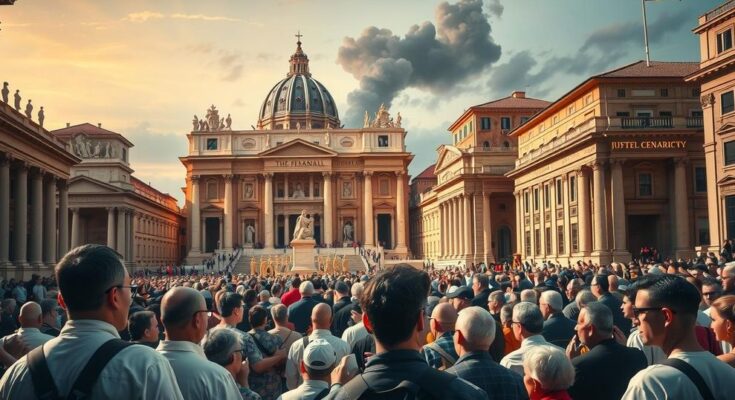Cardinal Sir John Ribat voted for a new pope, representing PNG and the Solomon Islands. The conclave, with 133 cardinals, began yesterday but did not elect a pope, with further ballots needed. Millions are eager for news as crowds await updates at St. Peter’s Square.
Cardinal Sir John Ribat made history by casting his first vote for a new pope, representing Catholics from Papua New Guinea and the Solomon Islands. This event took place during the conclave of 133 cardinals, convened to find a successor for the late Pope Francis. An oath was taken by the cardinals before the voting began, which commenced yesterday with several rounds expected, including another potential session tonight if no decision is reached.
As the anticipation builds, millions of Catholics around the globe are eager to learn who their new pope will be in the coming days. Following the initial ballot of voting, no pope was elected, despite approximately 45,000 people gathering in St. Peter’s Square to await the results, which had been anticipated around 7 p.m. on Wednesday but were delayed until 9.
The College of Cardinals began with an official procedure where they reaffirmed their commitments before participating in the first vote. Cardinal Ribat was among those taking part (as can be seen in an accompanying image). However, the first voting round resulted in black smoke emerging from the chimney of the Sistine Chapel, a traditional signal indicating the absence of a papal appointment.
Inside the square, Deacon Nicholas Nkoronko from Tanzania shared his hopes for the election, stating the collective mission was to pray for divine guidance during this pivotal moment. He emphasized the necessity of a holy pope, regardless of the new leader’s geographical roots — be it from Africa, Asia, or America.
As the conclave continued its discussions into the evening, a crowd amassed outside the Vatican, hoping for a second voting round’s outcome. The Papal Conclave comprises cardinals who are under 80 years old, a stipulation created through papal appointments. The particularly high number of voting cardinals fluctuates depending on both date and the College’s arrangement at the time — there are presently 133.
A conclave, characterized by its secrecy, gets its name from the Latin phrase “cum clave,” meaning “with a key,” which reflects the tradition of securing the venue where cardinals convene until a new pope is selected. The ballots are cast within the Sistine Chapel, and the process continues until a candidate earns a two-thirds majority, thereby being elected as pope. Subsequently, the new pope will assume a name and be formally presented to the public.
In summary, Cardinal Sir John Ribat of Papua New Guinea has made significant strides as he participates in the papal conclave, marking his inaugural vote to select a new pope. Despite the excitement and hope among the crowd gathered in St. Peter’s Square, the first ballot failed to yield a successor. With further voting rounds possible, the process remains ongoing as the world awaits the announcement of the next leader of the Catholic Church.
Original Source: www.postcourier.com.pg




